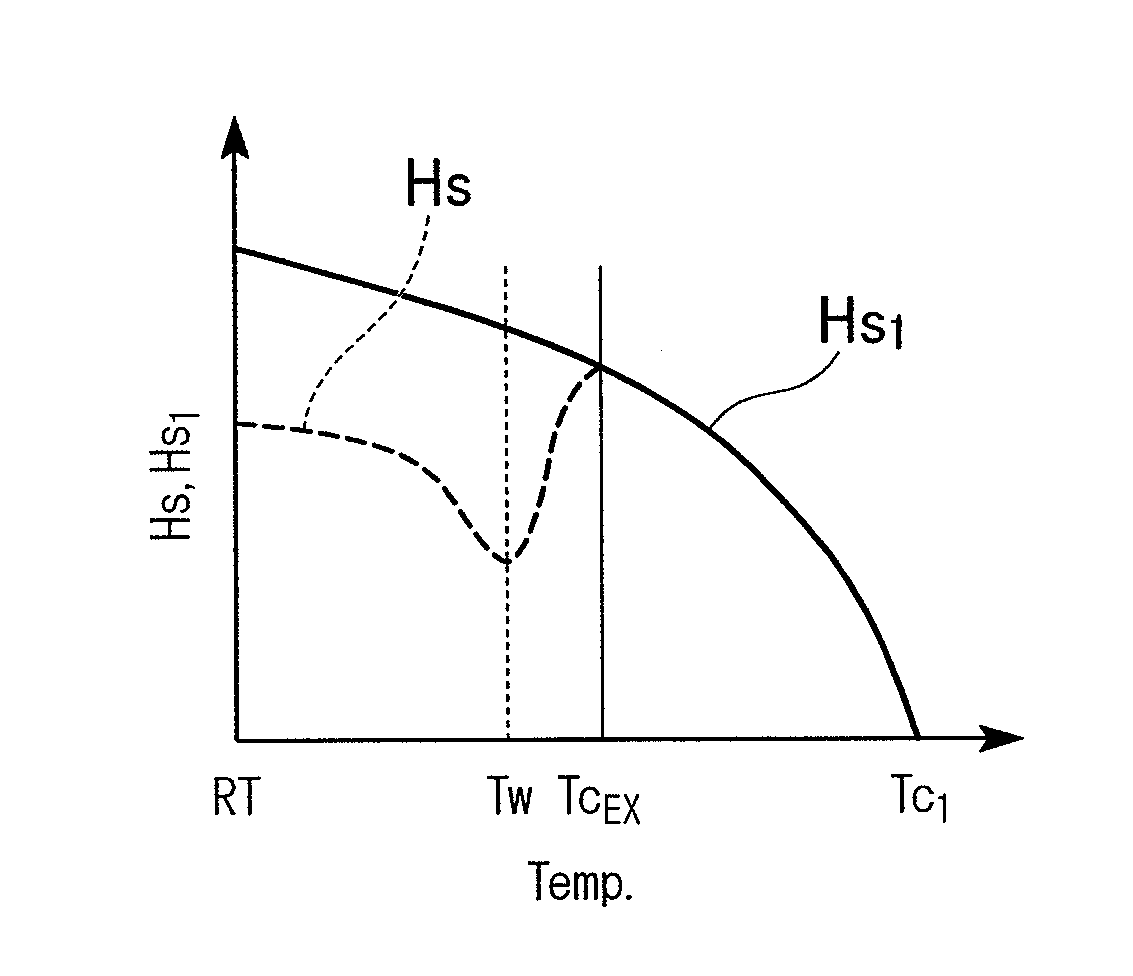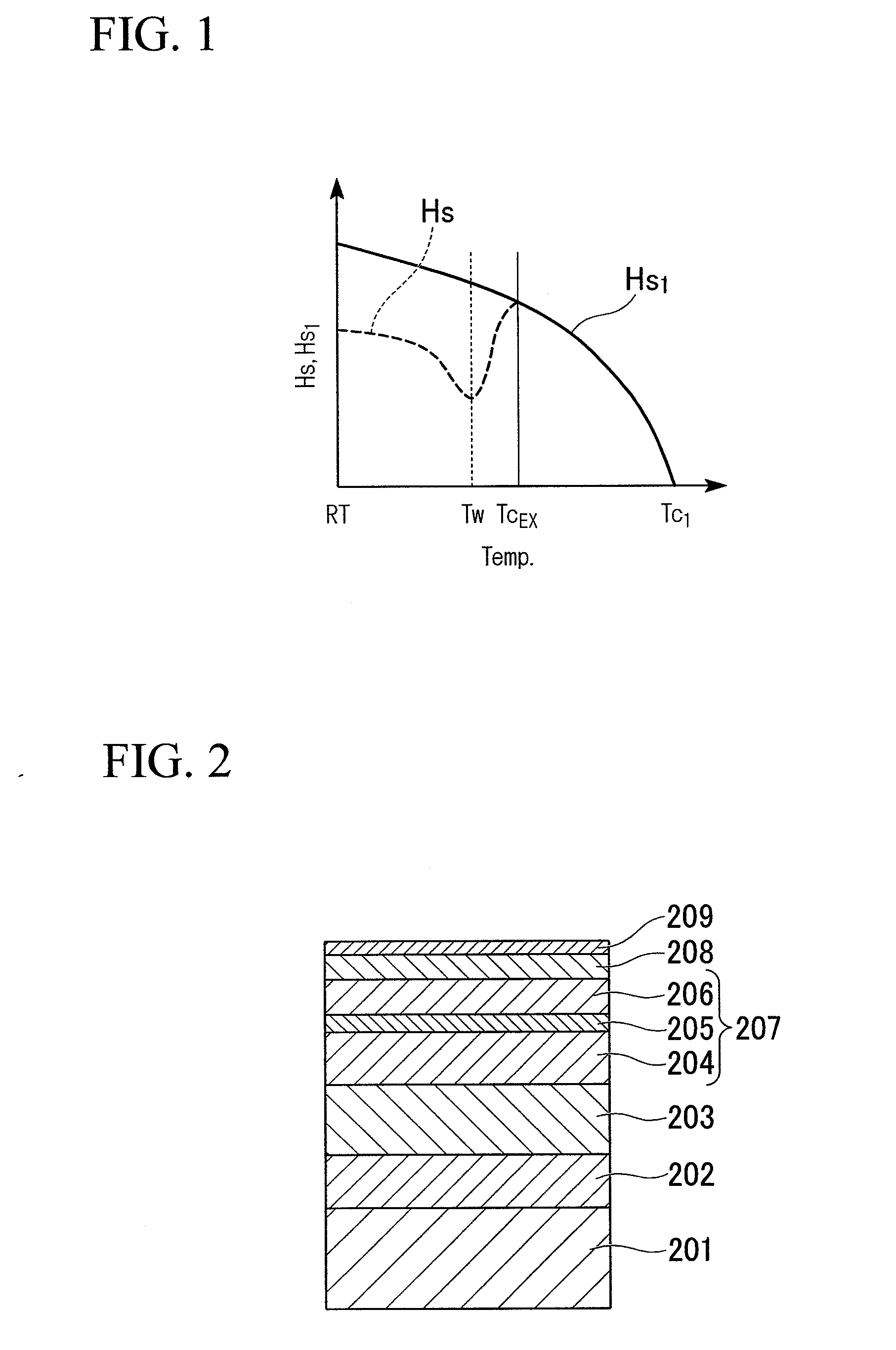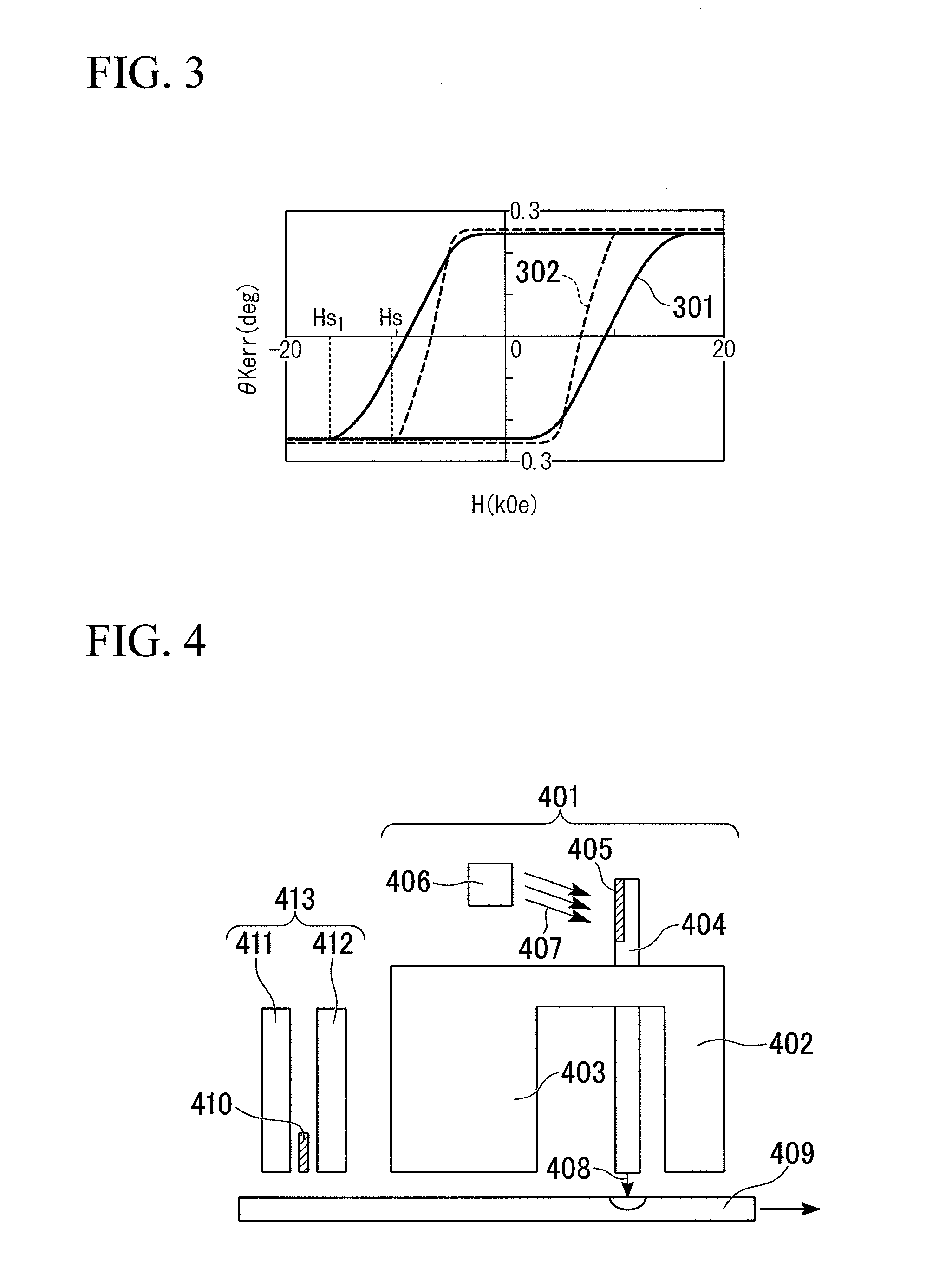Thermal-assist magnetic recording medium and magnetic recording and reproducing apparatus
a technology of magnetic recording medium and magnetic recording apparatus, which is applied in the field of thermolaser magnetic recording medium and magnetic recording and reproducing apparatus, can solve the problems of increasing the anisotropy magnetic field hk, and deteriorating the thermal stability
- Summary
- Abstract
- Description
- Claims
- Application Information
AI Technical Summary
Benefits of technology
Problems solved by technology
Method used
Image
Examples
example 1
[0089]The layer structure of a magnetic recording medium manufactured according to Example 1 is shown in FIG. 2.
[0090]In the magnetic recording medium, a seed layer 202 formed of NiTa with a thickness of 10 nm and a magnetic layer 207 including a first magnetic layer 204 formed of a (Co-25 at % Pt)—(TiO2) alloy with a thickness of 10 nm, a coupling control layer 205 formed of a CoRu alloy, and a second magnetic layer 206 formed of a CoCrPtB alloy with a thickness of 6 nm are stacked on a glass substrate 201 with a heat sink layer 203 formed of Cu with a thickness of 30 nm. After the magnetic layer 207 was formed, a carbon protective layer 208 with a thickness of 3.5 nm was formed and a lubricant film 209 with a thickness of 1.8 nm was formed thereon by application. In the coupling control layer, the Ru concentration (Curie temperature) in a CoRu alloy and the thickness were adjusted so that the saturation magnetic field Hs has the minimum value in the vicinity of 250° C.
[0091]The cr...
example 2
[0106]In Example 2, a magnetic recording medium having the same layer structure as in Example 1 was manufactured, except that a (Co-20 at % Pt)-7 mol % (SiO2) alloy with a thickness of 12 nm is used in the first magnetic layer 204, a Ni-2 at % Cr alloy with a thickness of 5 nm is used in the coupling control layer 205, and a Co-11 at % Cr-13 at % Pt-5 at % B alloy with a thickness of 5 nm is used in the second magnetic layer 206.
[0107]In the magnetic recording medium according to Example 2, the Curie temperature of the coupling control layer 205 was 310° C. The curie temperatures of the first magnetic layer 204 and the second magnetic layer 206 were higher than that of the coupling control layer 205 and the magnetizations thereof remained at a temperature equal to or more than 310° C.
[0108]The temperature dependency of Hs in the magnetic recording medium according to Example 2 is shown in FIG. 5.
[0109]As shown in FIG. 5, in the magnetic recording medium according to Example 2, Hs ha...
example 3
[0113]The layer structure of a magnetic recording medium manufactured in Example 3 is shown in FIG. 6.
[0114]The magnetic recording medium according to Example 3 is manufactured by sequentially forming a soft magnetic underlying layer (SUL) 604 including CoTaZr alloys 602 antiferromagnetically coupled to each other with a Ru layer 603 interposed therebetween with a total thickness of 50 nm, an underlaying layer 605 formed of NiWB with a thickness of 5 nm, a heat sink layer 606 formed of AgCu with a thickness of 30 nm, a magnetic layer including a first magnetic layer 607, a coupling control layer 608, and a second magnetic layer 609, a carbon protective layer 610, and a lubricant film 611 on a non-magnetic substrate 601.
[0115]In Example 3, the substrate is not heated. In addition to the above-mentioned materials, soft magnetic alloys such as FeTaC, CoTaZr, CoNbZr, CoFeTaB, and CoFeTaSi may be used in the SUL604. A (Co—20 at % Pt)—SiO2—TiO2 alloy with a thickness of 12 nm was used in ...
PUM
 Login to View More
Login to View More Abstract
Description
Claims
Application Information
 Login to View More
Login to View More - R&D
- Intellectual Property
- Life Sciences
- Materials
- Tech Scout
- Unparalleled Data Quality
- Higher Quality Content
- 60% Fewer Hallucinations
Browse by: Latest US Patents, China's latest patents, Technical Efficacy Thesaurus, Application Domain, Technology Topic, Popular Technical Reports.
© 2025 PatSnap. All rights reserved.Legal|Privacy policy|Modern Slavery Act Transparency Statement|Sitemap|About US| Contact US: help@patsnap.com



